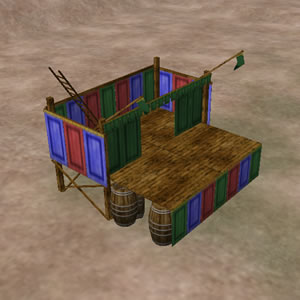The virtual theatres
Medieval fairground booth

Stages and platforms are synonymous with theatre and public presentation. Since the birth of theatre in Ancient Greece in the 5th Century BC until modern times, actors have 'treaded the boards' of the stage in the presentation of dramatic action. The development of the stage from a simple wooden platform to the contemporary proscenium arch stage seen in theatres throughout the world today, is an interesting story and one which can be used to trace the development of theatre through the ages. As technology advances and the content of drama has changed, so too have the stages on which plays are performed.
The first purpose-built stages were seen in Ancient Greece; these stages developed from simple wooden platform structures to elaborate and permanent stone. The Phlyakes dramas seen in the colonies of Ancient Greece in 4BC employed wooden platform stages; evidence of these stages is provided by a number of ancient vases found in southern Italy and Sicily. The staging of liturgical dramas in churches throughout Europe from the 10th century, saw the resurrection of platform stages in the form of 'mansions' and 'houses'. The use of wooden platform staging continued throughout the Middle Ages developing in scale and complexity until the late 15th century, when the first purpose-built playhouses were built.